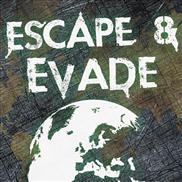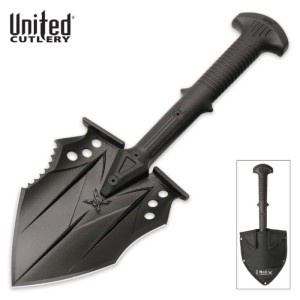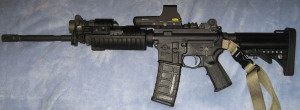One of the most controversial subjects in this community is the contents of your BOB (Bug Out Bag)! I don’t want to get into a big heated debate in the comments section, because yes, I read all of them and respond to as many as I can, so as a disclaimer, this is MY list and it is centered around my needs and my abilities! Yours could vary considerably depending on your knowledge base, climate and bug out destination, which brings me to my next disclaimer! Bugging out is a last resort scenario! You are almost always better off staying put, hunkering down and sheltering in place. Your house/apartment is the largest version of your stuff and has way more resources than you can carry with you! So to reiterate, bugging out is a last resort and should only be done if remaining in place will put your life or the lives of your family in danger.
Where are you bugging out to? How are you getting there? Here’s the deal folks; we plan everything! If you leave your home and all of your stuff on foot with a backpack full of stuff that someone on the internet said you were going to need, bound for God knows where; odds are the vast majority would be dead in a week! If you have to leave your home, have a specific destination and a plan to get you there! That being said, your Bug Out Bag is the gear that you will need to get you from your original location to your planned destination, that’s it! There’s none of this, “well, I might need to kill and cook a deer on the way” B.S. If you’re bugging out and God forbid having to do so on foot, a whole lot has gone bad and this should be treated like a SERE scenario!
- Avoid human contact. Just because you’re paranoid doesn’t mean they aren’t out to get you! If you want to be a Christian charity when you’re at home or again in your bug out location, fine but on the road avoid people. You have no idea how desperate people are, what their circumstances are or what they’re capable of. Anything you can do that will attract attention, don’t! To name a few items: this includes fires, cooking, hunting and discharging a firearm (unless YOUR life depends on it). It’s definitely not an all inclusive list, but you get my meaning.
- Plan for shelter first. Next to not having air, not having shelter will kill you first. You should have 2-3 changes of underclothes and wool socks and some good, comfortable, insulated, over the ankle hiking boots. The type of clothing is dependent on climate, season and altitude, however layer your clothing so you can shed layers when hot and add layers when cold. You should have 2-3 different ways to stay dry. A rain suit and a military type poncho is what I recommend. The poncho has grommets and can be used as a shelter as well. If traveling with my family I might include a small tent but you have to weigh the threat of being seen.
 I depend mainly on my surroundings to provide the items for my shelter because with the tools in my pack I can build several different kinds. But you can really hedge your bets with a 6’X8’ tarp, it will always come in handy. A bedroll, preferably a good lightweight sleeping bag.
I depend mainly on my surroundings to provide the items for my shelter because with the tools in my pack I can build several different kinds. But you can really hedge your bets with a 6’X8’ tarp, it will always come in handy. A bedroll, preferably a good lightweight sleeping bag. - Next worry about water. In a pinch you can go a couple days without but it will have an effect so plan for about 1 liter per day per person. You will be walking and exerting your body and you will sweat even if it’s cold, so to avoid dehydration and cramping drink your water.
 Many packs have a hydration system built into them, I just use 2 canteens. Life Straw filters like 1000 liters of water and is a great back up. Water purification tablets are light weight but generally purify more water than you will drink and can be harmful when trying to use small doses. If you use them purify the recommended amount of water, fill your containers and leave the rest for someone else.
Many packs have a hydration system built into them, I just use 2 canteens. Life Straw filters like 1000 liters of water and is a great back up. Water purification tablets are light weight but generally purify more water than you will drink and can be harmful when trying to use small doses. If you use them purify the recommended amount of water, fill your containers and leave the rest for someone else. - The next thing to plan for is accidents. I’m not going to spend a lot of time talking about a first aid kit because I couldn’t do it justice here; it deserves and will have its own edition. There are a couple things I will say, first I recommend you build your own, so you have firsthand knowledge of everything in your kit and you don’t have a lot of what you are unlikely to need but not enough of what you are more likely to need. Also, if you live anywhere that you could run into poisonous snakes have a snake bite kit.
- Food is down the list a bit for me. Since this kit is for 48-72 hours, food should be minimal. I won’t spend a lot of time on it since it should consist of energy bars and trail food, maybe MRE’s that don’t need to be cooked. All you want is calories to give you energy to get you where you’re going, although avoid candy bars since they will give you a sugar rush that will be over as quickly as it began.
- Tools are an important part of the kit. A good multi tool, I prefer Leatherman, will do so many things for you. A shovel type tool can do far more than just dig, the M48 can be used as an ax, as a machete, it has a serrated edge and would be a wicked weapon in a hand to hand situation.
 A wire saw can be used to cut poles for shelters as well as firewood. One of the other hotly debated topics in this field is: what is the best survival knife? Since I’m going to do a whole article on it, let’s just say have a good survival knife that is comfortable for you.
A wire saw can be used to cut poles for shelters as well as firewood. One of the other hotly debated topics in this field is: what is the best survival knife? Since I’m going to do a whole article on it, let’s just say have a good survival knife that is comfortable for you. - Miscellaneous items, that I couldn’t categorize elsewhere. A solar/hand crank AM/FM radio to keep appraised of emergency news. A good flashlight and a head light preferably with red lenses with extra batteries for each. Although I recommend only using them inside a structure where there is no light, to avoid detection. 2- 50 gallon black plastic trash bags, can be used to collect water and as ponchos. Cell phone with power bank for recharging, this isn’t to play candy crush on the trail but for emergency communication if there is reception. There are also plenty of useful apps that can be used even if they aren’t (like my spotting and bullet trajectory app). A pencil and small note pad for making notes, writing coordinates, bearings and anything else you may need to remember. A couple bandanas can be used for 100 things. 100 ft of 550 cord (paracord), 50 ft of climbing type rope something in the 10mm range also some military surplus trip/snare wire 50 ft or so. Don’t forget maps of the area and a compass. Duct tape, binoculars, 3 different ways to start a fire (for emergencies and distraction), bug spray and sunscreen round out the list.
- Personal protection items, is again a much debated topic. Many cannot legally carry a firearm due to their local laws, however since this is my blog and I live in Texas and was fairly clear at the beginning that this is about MY equipment, I am always carrying both a handgun with spare magazine and a assisted opening locking blade type knife.
 You can be sure if I’m bugging out I will also have a tactical carbine rifle also with several spare magazines.
You can be sure if I’m bugging out I will also have a tactical carbine rifle also with several spare magazines. - Personal hygiene items. A toothbrush and toothpaste will make you feel a whole lot better than if your teeth are wearing sweaters while you walk. Also since you are only going to be out 48-72 hours, handiwipes to clean the sensitive areas will help prevent chaffing and a roll of toilet paper in a plastic ziplock bag.
This list is not all inclusive, and mine changes by season and is modified periodically based on my needs and desires but it will give you somewhere to start.
